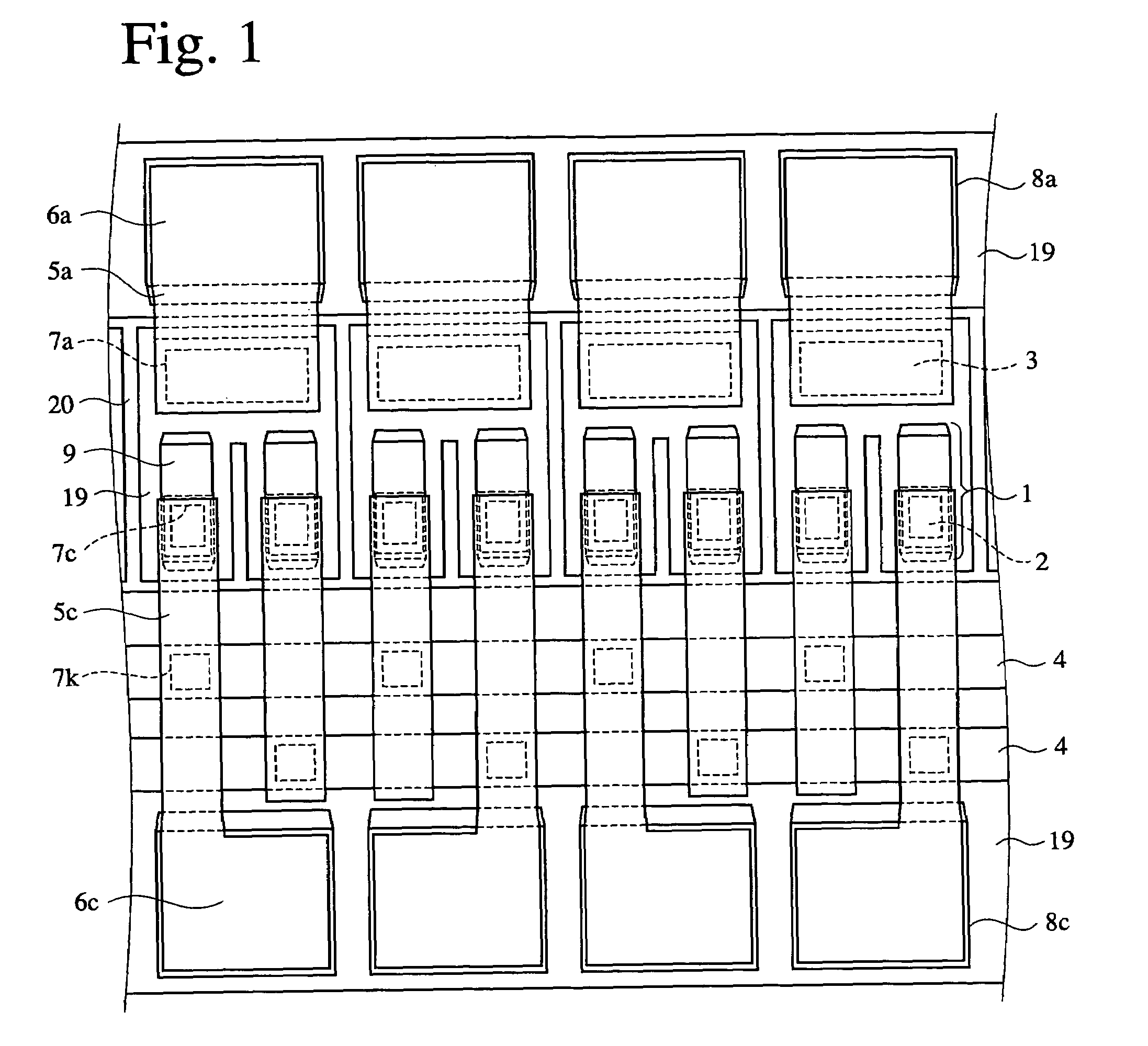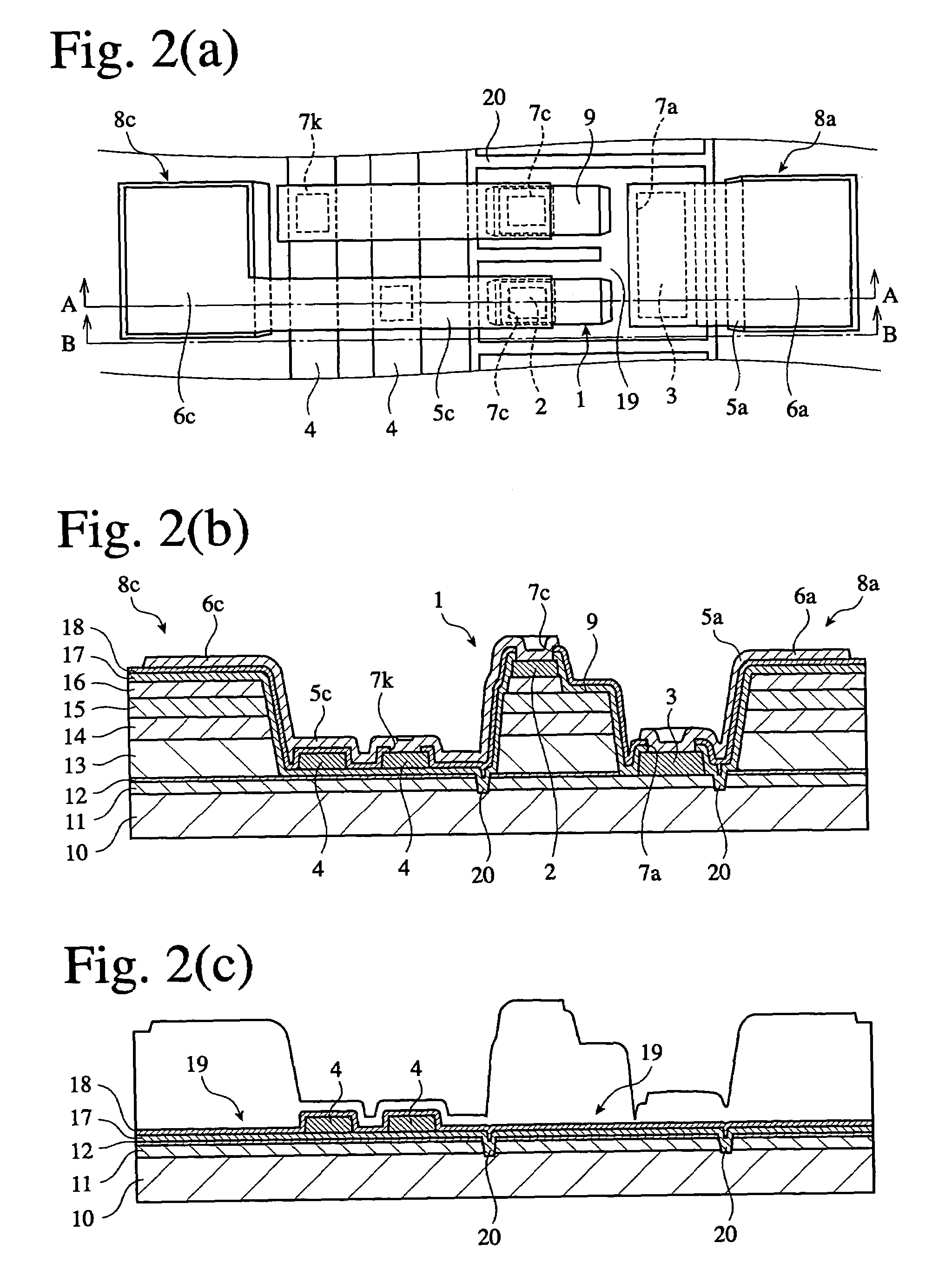Light-emitting diode array
- Summary
- Abstract
- Description
- Claims
- Application Information
AI Technical Summary
Benefits of technology
Problems solved by technology
Method used
Image
Examples
Embodiment Construction
[1] Structure of Light-emitting Diode Array
[0026]As shown in FIGS. 1 and 2, the light-emitting diode array of the present invention comprises a substrate 10, a plurality of light-emitting portions 1 formed on the substrate 10, a first electrode 2 partially formed on a top surface of each light-emitting portion 1, and a second electrode 3 formed on the conductive layer 11 adjacent to the light-emitting portions 1. In the depicted embodiment, each light-emitting portion 1 is a separate epitaxial layer portion obtained by dividing an epitaxial layer uniformly formed on the substrate 10 by mesa-etched grooves 19, 20.
(1) Substrate
[0027]The substrate 10 is not particularly restrictive as long as it may be used for light-emitting diodes, and it need only have a structure capable of electrically insulating the light-emitting parts. It may be either an n-type substrate or a p-type substrate, and a semi-insulating substrate such as a semi-insulating GaAs substrate, etc. or an insulating subst...
PUM
 Login to View More
Login to View More Abstract
Description
Claims
Application Information
 Login to View More
Login to View More - R&D
- Intellectual Property
- Life Sciences
- Materials
- Tech Scout
- Unparalleled Data Quality
- Higher Quality Content
- 60% Fewer Hallucinations
Browse by: Latest US Patents, China's latest patents, Technical Efficacy Thesaurus, Application Domain, Technology Topic, Popular Technical Reports.
© 2025 PatSnap. All rights reserved.Legal|Privacy policy|Modern Slavery Act Transparency Statement|Sitemap|About US| Contact US: help@patsnap.com



